by Lee
An ATV or Side By Side’s lifespan is 15 to 20 years if you do proper maintenance.
The average miles I expect out of a used ATV is 800 miles a year. So a 5-year-old ATV, I expect to have around 4,000 miles.
Let me explain why I say 15 years max and 800 miles a year for ATVs.
ATVs and side by sides are measured in both mileage and hours.
These two numbers are not a replacement for the other and will often be wildly different, especially across the globe.
Mileage and hours on an ATV can tell you a lot about them.
If you see an ATV with high mileage, but low hours it tells us they like to drive it fast. Not always an issue because this is normal when riding in the dunes but a huge red flag if taken to the extreme.
If you see an ATV with low mileage and high hours, it tells us they do more trail riding or are hunters. It could also mean they do a lot of snow plowing if they live where it snows a lot.
The average rider puts 800 miles on their ATV or side by side every year.
These numbers can vary a lot, especially on who drives the ATV and where.
An ATV is the primary source of transportation in some countries and small cities, and seeing 30,000+ miles is not crazy. Also, the farmer who uses his side-by-side daily for work will have a lot more hours than the guy who rides on the weekends.
But my baseline is 800 miles a year when I’m looking to buy a used ATV.
| Years | Miles |
|---|---|
| 1 | 800 |
| 2 | 1600 |
| 3 | 2400 |
| 4 | 3200 |
| 5 | 4000 |
| 6 | 4800 |
| 7 | 5600 |
| 8 | 6400 |
| 9 | 7200 |
| 10 | 8000 |
| 11 | 8800 |
| 12 | 9600 |
| 13 | 10400 |
| 14 | 11200 |
| 15 | 12000 |
This means if the ATV is 5 years old, I expect it to have around 4,000 miles on it. It’s when the miles vary from this baseline that I worry. A 5-year-old ATV with only 80 miles on it screams trouble, along with one having 80,000 miles on it.
It’s when the miles vary from this baseline that I worry. A 5-year-old ATV with only 80 miles on it screams trouble, along with one having 80,000 miles on it.
What matters more than hours or miles is how well the ATV was taken care of. Don’t let high miles keep you from an ATV that was properly maintained!
Average miles per year = 800 miles.
Max years for an ATV = 15 years.
800 miles * 15 years = 12,000 miles
I consider 12,000 miles a lot, especially if the ATV is under 15 years old.
Why 15 years? The manufacturer stops making vital parts for ATVs after that point. An ATV can go forever if you can get the parts, but a lot is discontinued after 15 years, and no point in keeping it going if you can’t work on it.
Would I buy an ATV with a lot of miles? Probably, it depends on how well it was taken care of. Let me explain.
I’ve seen guys with high mileage and high hours have no issues and keep trucking along.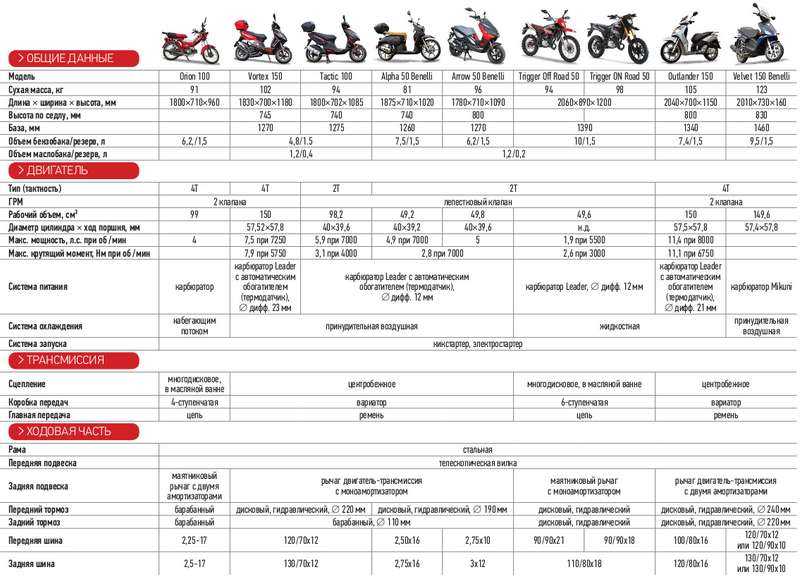
I’ve also seen guys with low mileage and low hours and not take care of their ATV, and it turns to crap.
What matters the most is checking the ATV out in person and not some numbers anyone can screw with.
I had one guy try to sell me a limited-edition Can-Am Outlander 1000 with low hours and miles. The deal seemed too good to be true, and it was. When I looked at the ATV, I could tell the frame had bad cracks. This ATV was in a bad accident, and I later found out the dude rolled it down a mountain. The dude spent a lot of money to get new plastics and was trying to pass it off to someone else.
This is why mileage and hours are secondary to actually checking the ATV out in person.
I rather have an ATV with a lot of miles on it but taken care of than one with low miles and left to rot. A high mileage ATV tells me that the previous owner liked the quad and didn’t seem to have much trouble getting to those high miles; less likely to be a lemon that someone is trying to push on to someone else!
I hate this question because I’m a Can-Am guy, so naturally, I want to say Can-Am.
I’m sure a Yamaha or Honda guy will say the same thing.
But I will give it to Honda; they got it figured out and make some of the best engines. They lack in tech where Can-Am over-delivers, but I’ve seen 20-year-old Hondas still going to this day.
Since Honda is slower to change, this helps keep their ATVs going for longer. Many of their parts for older models are still around. I have a 1999 Can-Am Traxter that would still run if I could get a discontinued part. This is what decides how long your ATV last, not the hours or the mileage.
Unless you love going mudding and know what you’re doing, avoid the mud machines.
That is the XMR’s and other brands that come from the factory with a snorkel and are “mud ready.” Or the guys who convert their stock ATV to a mudding one.
These ATVs don’t have much of a warranty and are rode very hard. It’s not uncommon for them to get hydro locked due to mud and water getting in the engine and intake.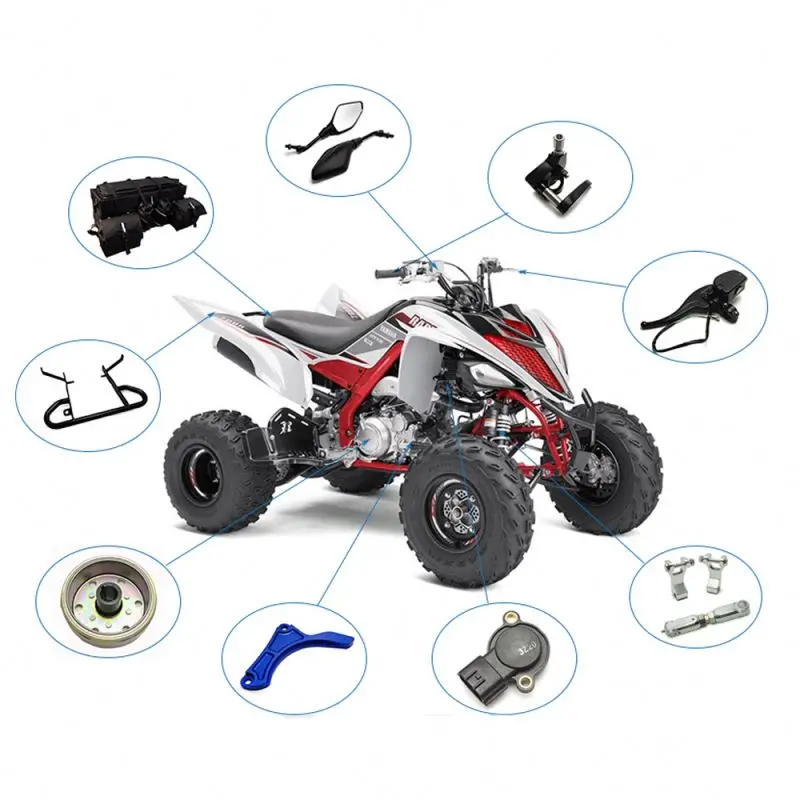 Water in the engine can bend piston rods and blow the engine.
Water in the engine can bend piston rods and blow the engine.
Mudding ATVs are taken apart and tore down often due to them getting submerged in water and mud all the time.
I love going in the mud and getting crazy, but that is not the problem; the problem is the guys who take their ATVs and put them entirely underwater. Those are the ATVs to avoid as those things develop phantom issues eventually.
Not all mud machines are bad, but this ATV Mud Machine below is not one I would buy secondhand.
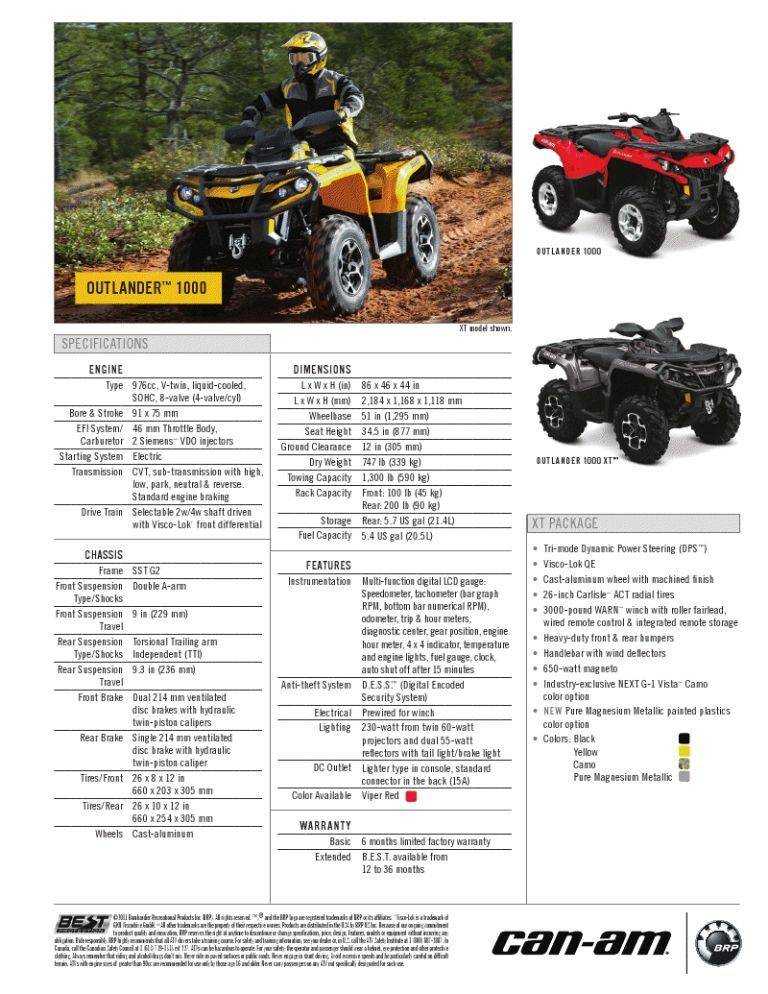
You’ve thought long and hard about which model ATV is best for your needs, but before you invest your hard-earned dollars into the quad of your dreams, spare a thought about how long your machine is likely to last.
Every ATV is different, and while spending money on spares and repairs is par for the course, there could come a time when it no longer becomes cost-effective to fix up your quad. When repair work starts costing more than you spent on the original purchase, you need to write-off your ATV and invest your money in a new one instead.
Most ATVs will last a long time with careful maintenance; taking care of your machine will save you money in the long run, helping you avoid expensive engine rebuilds. The average lifespan of an ATV is pretty good and there are plenty of riders out there clocking up more miles on machines that are over twenty years old. The second hand ATV market is thriving, mainly because so many ATVs can be trusted to go on and on.
It’s impossible to say that your ATV will last a certain number of hours or miles as it depends on many factors like where you are riding, how you are riding, and what care you take of your machine. For example, if you tend to do lots of road riding, you could clock up a few hundred miles quite easily and put very little wear on your ATV. On the other hand, if you are riding deep, muddy trails where you end up submerged every so often, you might only manage around 50 miles before some serious repairs are needed.
For example, if you tend to do lots of road riding, you could clock up a few hundred miles quite easily and put very little wear on your ATV. On the other hand, if you are riding deep, muddy trails where you end up submerged every so often, you might only manage around 50 miles before some serious repairs are needed.
If you are buying a second-hand quad, age is not a good indicator of how long your machine will last. You need to find out how it has been ridden. Try to get a good look underneath and check how the boots and bearings look as an indication of how much off-road work has been done. Look for other signs of wear and tear like rust on the frame and beneath the plastics. Chassis rust can spell an early end for an ATV if there isn’t enough good quality metal left to weld onto.
Well maintained quads that are regularly serviced should last over 10 years without too many problems and many go on well into their twenties. Harder working machines should give at least 6 to 8 years of faithful service before they start to let you down.
While it is possible to keep a quad going well into its late teens and twenties, many riders find they outgrow their quads and tend to sell them on the second-hand market. This way, they can make the most of the newest machines with the latest features being produced all the time.
Machines That Live ForeverSome 1980s models still run like new today especially if they have been stored inside, regularly oiled, and kept greased. At the same time. some models less than 10 years old could be ready for the scrap yard. When you ask which makes seem to last the longest, two names come up more often than the rest: Suzuki and Honda.
Suzuki engines, on bikes and ATVs, are definitely built to last and as long you give them the right care and attention, you should be able to get more than your money’s worth. There are some old King Quad 300s to be found that still purr like kittens, and the Suzuki 450 looks like it could go on forever. Parts are also easy to come by, both new and on the second-hand market which means repairs can be cheap and fast if they are ever needed.
Honda has a long-standing reputation for reliability and you see so many golden oldies advertised for sale it goes to show they keep on performing well into their golden years. Often the first choice for heavy farm work and yard duties, tough little Hondas can be trusted to get the job done without needing to spend too much time in the shop.
The Honda Rincon is a great little quad, and there are many of them still being hammered around trails at over 20k miles without needing any extra repairs.
Other quality quads in the used market include the Yamaha Grizzly 700 and the Yamaha Rhino.
ATVs That Die YoungAny model ATV can be killed off early if ridden hard and not maintained, but some models seem destined to give out before their time. There are plenty of Chinese knock-off models that look pretty and can be bought new for less money but parts can be tough to source making it difficult to keep them on the road once they reach more than 6 or 7 years old.
Polaris seems to have mixed reviews: plenty of people rate them highly and would place them at the top of the list, but there are some notorious electrical problems to be had and these are never a cheap or easy fix. The Polaris Arctic Cat is the first choice for many, but just as many others would give it a wide berth.
Keeping Your ATV On The Road/TrailWhatever model your quad, it’s going to last longer if you take good care of it. Regular maintenance is vital, some of which you can probably do yourself. If you are new to ATV maintenance, it’s a good idea to get it serviced professionally every once in a while to make sure nothing vital is left out.
One of the worst things for causing damage to ATV engines is dust and dirt from the road getting into the engine. You need to change the air filters regularly, and more often if the ATV is used in a dusty environment like a gravel yard or in hot weather.
The other great enemy that can bring your ATV to premature death is mud. You need to keep it greased to protect the underneath from penetrating moisture and never leave your machine covered in sticky mud after a ride. A few minutes to wash it down could be enough to add a few years to its life.
You need to keep it greased to protect the underneath from penetrating moisture and never leave your machine covered in sticky mud after a ride. A few minutes to wash it down could be enough to add a few years to its life.
Avoid using a powerful jet-wash, though, as this could damage seals. It’s a good idea to dry your bike by starting the engine before putting it away. Mud can stick to chains and brakes, so you will need to dismantle these and give them a really good clean from time to time. Remember you need to oil or grease everything before you put it back together to avoid corrosion.
Regular oil changes are another important way to make your quad last as long as possible. Don’t forget to change the oil filter at the same time or you will simply push the old gunk into the new oil. Check for corrosion on electrical terminals as this is the main cause of electrical faults. Take each terminal part and lubricate to protect from rust. Look for wear and tear on the wiring while you are at it to avoid the ATV shorting out as you are riding.
Storing your ATV under a roof or indoors is another great way to help it last longer. This will keep the plastic from fading in the sun and stop rain from causing rust and corrosion. If you can’t get indoors, some people like to keep their ATV covered with a tarp or purpose-made cover. A good option is this Badass Moto Ultimate ATV Cover found here on Amazon. This heavy duty waterproof ATV cover has vents, taped seams, and even a zipper to access the gas tank.
These can be really handy, especially if you want to store your ATV for a while, but you need to make sure they are breathable and that your vehicle is completely dry before going away or you will inadvertently encourage corrosion. Simply by getting into the routine of keeping your ATV clean and well maintained, you can give your machine the best chance of a long lifespan.
Sharing is caring!
There are many ATVs on sale, which differ in a lot of parameters. One of the most important nuances to pay attention to is the type of engine. This characteristic determines the functionality and scope of the ATV. Over time, a situation may arise when the engine for the ATV needs to be replaced. In this case, you need to know what characteristics to look for when choosing.
One of the most important nuances to pay attention to is the type of engine. This characteristic determines the functionality and scope of the ATV. Over time, a situation may arise when the engine for the ATV needs to be replaced. In this case, you need to know what characteristics to look for when choosing.
Today on the market you can find ATVs that run on gasoline or electricity. The design of the motors in such devices has a lot of differences. The functionality of engines for ATVs is also different.
Electric motors are less powerful. The energy reserve of such a vehicle is small, it is enough for about 40-50 km. The average ATV electric motor is capable of running the vehicle for 1-2 hours. After that, you will have to recharge the battery. Therefore, electric motors for an ATV are installed only in children's vehicles. An hour is enough for a child to play and ride such a vehicle. Then you will need to take a break to recharge.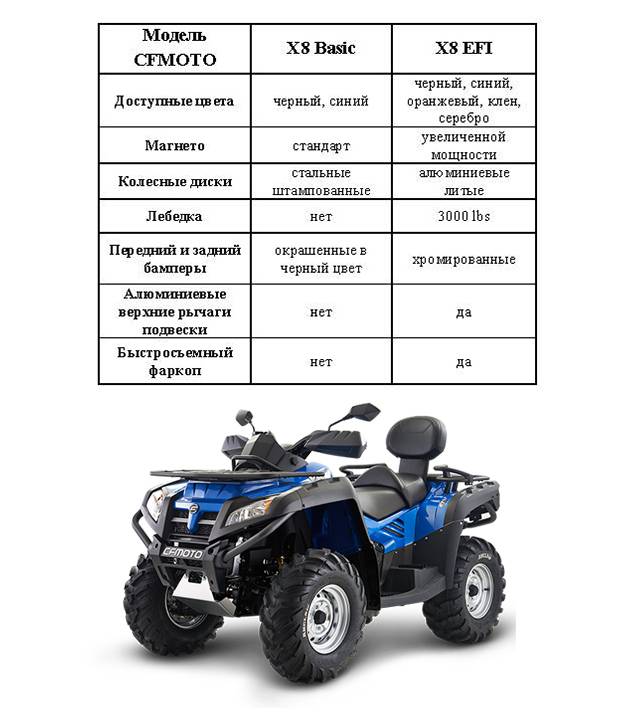
AI-92 gasoline is the most common type of fuel for ATVs. An engine running on such fuel is powerful and provides the car with high cross-country ability. It allows you to feel a real drive when driving over rough terrain. If you plan to arrange a trip to the forest, go fishing or hunting, perform household tasks, you will need an ATV with a gasoline engine.
For extreme off-roading, you need not just a gasoline engine, but a high-powered engine. Combined with the transmission, the system converts fuel energy into high torque. For this reason, ATVs with a gasoline engine can overcome serious obstacles on the road, easily move on any off-road.
Motor power is related to the weight of the ATV. This is how the specific power of the engine is determined. Lightweight construction of motor vehicles in combination with a good motor provide high cross-country ability of ATVs. The working volume of gasoline engines can be different. On children's and teenage models of all-terrain vehicles, motors with a volume of 50 cc are installed, and on adults from 100 cc.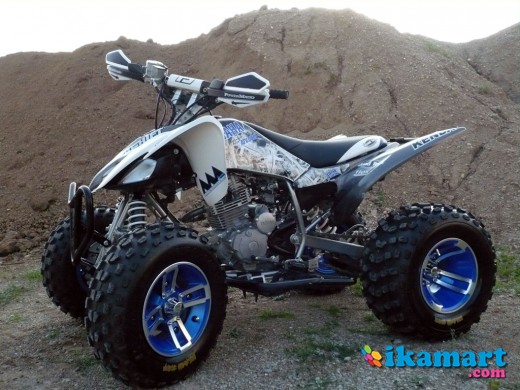
Gasoline engines are developed by many manufacturers, so when choosing a motor, you need to pay attention to the brand. Also one of the most important characteristics is the number of cycles: two or four.
In two-stroke engines, the piston completes the working cycle in one stroke, and in four-stroke engines, in two strokes. In the engine, the fuel mixture is injected, compressed, detonated and exhausted. Therefore, we can say that four-stroke engines produce less power if the cylinder size is the same. Therefore, most manufacturers equip their equipment with four-stroke engines.
There is an opinion that oil must be added to the fuel for a two-stroke engine. This statement is not always correct. Today, there are two-stroke engines that do not require mixing oil with gasoline. Such models are produced, for example, by the well-known brand Catarpillar.
A distinctive feature between two-stroke and four-stroke engines is the different amount of harmful substances in the exhaust gases. Engine manufacturers are required by today's standards to reduce emissions of toxins. Therefore, four-stroke motors, which differ in relatively acceptable environmental performance, are installed in the vast majority of ATV models.
Engine manufacturers are required by today's standards to reduce emissions of toxins. Therefore, four-stroke motors, which differ in relatively acceptable environmental performance, are installed in the vast majority of ATV models.
Depending on the size of the engine, its functionality is determined. So, there are several categories of motors that differ in this indicator. The volume of the motor can be:
 ATVs with such motors are equipped with durable trunks, which will allow you to transport different loads.
ATVs with such motors are equipped with durable trunks, which will allow you to transport different loads.
The better the engine is maintained, the longer it will run. Two-stroke engines require much more maintenance than four-stroke ones. This is due to the principle of operation of engines.
In two-stroke models, combustion takes place predominantly in the cylinder. Because of this, the temperature in the two-stroke motor system is higher. As a result, some parts wear out faster.
Four-stroke models are not only easier to maintain, but also consume less gasoline and oil. They also run quieter and create less vibration. Therefore, most models of ATVs are equipped with a four-stroke engine. But sports models are more often equipped with a two-stroke engine, since with equal volumes it produces more power.
Thanks to its design features and compact size, the ATV is able to solve a wide range of tasks - from walking and tourism to working in the backyard or forestry. That is why the popularity of these machines is growing, and manufacturers are tirelessly expanding and updating the lineup. But, like any technique, an ATV needs timely and high-quality service, and given the large number of original and highly loaded components, the right choice of lubricants becomes the key to trouble-free and durable service.
Features of choice
To choose the right oil, you need to follow the manufacturer's recommendations and take into account specific operating conditions.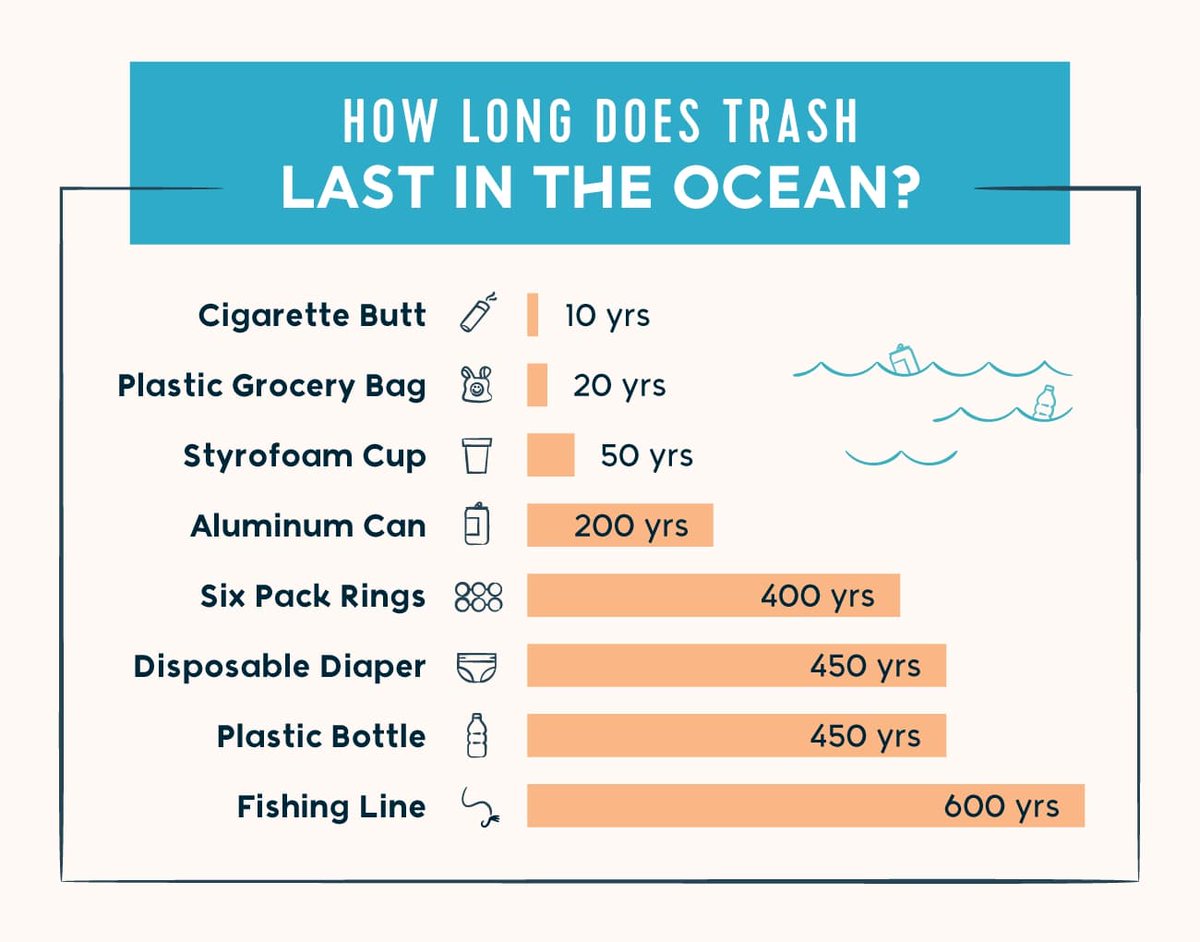 Unlike other motor vehicles, ATVs operate on any soil and at any time of the year, which means that the oils for the units must have their own original recipe, designed for high loads and harsh conditions. It would not be out of place to recall that, unlike cars, quadrotechnics can have a smaller crankcase volume, which significantly reduces the service life of the oil, and therefore, it must have higher oxidation resistance and thermal stability.
Unlike other motor vehicles, ATVs operate on any soil and at any time of the year, which means that the oils for the units must have their own original recipe, designed for high loads and harsh conditions. It would not be out of place to recall that, unlike cars, quadrotechnics can have a smaller crankcase volume, which significantly reduces the service life of the oil, and therefore, it must have higher oxidation resistance and thermal stability.
What will happen if you use car oil
Many owners are still sure that ordinary car oils are suitable for motorcycles, they say, what's the difference. However, this opinion is erroneous. The ATV engine operates in more extreme conditions and at higher temperatures, which means that the oil should not thin excessively when heated, otherwise this will lead to coking of the piston rings, noticeable waste and accelerate engine breakdown.
Oils for motorcycles
ATV motors are the closest to motorcycle motors in terms of their technical characteristics./000_272image006.jpg) Therefore, the types of oils they have are almost identical. They are divided according to the type of motors - for two-stroke and for four-stroke. But two-stroke engines are rather exotic. They are used either on small and children's quadrics, or in serious sports, where weight and recoil are much more important than resource. The vast majority of ATVs today have four-stroke engines (single and two-cylinder), and the similarity to automotive oils is limited to base types - synthetic, HC-synthetic, semi-synthetic and mineral. Mineral and semi-synthetic bases (as well as oils based on them) are the least in demand due to their inability to withstand increased loads for a long time. Their only plus is the price. Oils based on HC-synthetic have improved performance, are resistant to oxidation and, compared to mineral oils, have a greater margin of survivability. In addition, their advantage is the possibility of operation in the winter. These are the undisputed market leaders in lubricants for motorcycles.
Therefore, the types of oils they have are almost identical. They are divided according to the type of motors - for two-stroke and for four-stroke. But two-stroke engines are rather exotic. They are used either on small and children's quadrics, or in serious sports, where weight and recoil are much more important than resource. The vast majority of ATVs today have four-stroke engines (single and two-cylinder), and the similarity to automotive oils is limited to base types - synthetic, HC-synthetic, semi-synthetic and mineral. Mineral and semi-synthetic bases (as well as oils based on them) are the least in demand due to their inability to withstand increased loads for a long time. Their only plus is the price. Oils based on HC-synthetic have improved performance, are resistant to oxidation and, compared to mineral oils, have a greater margin of survivability. In addition, their advantage is the possibility of operation in the winter. These are the undisputed market leaders in lubricants for motorcycles.
Features of winter operation
For operation at negative temperatures, it is desirable to use oils with good low-temperature properties. They must have an HC-synthetic or synthetic base. It is also possible to use mineral water or semi-synthetics, but it must be borne in mind that in severe frost their pumpability decreases markedly and the engine may suffer. In general, an ATV, like any equipment, needs to be prepared for the winter: change the technical fluids, check and charge the battery, treat rubber bands and wires with silicone.
Oils and products for ATV operation
When choosing oil, it is advisable to focus on trusted manufacturers. For example, with Liqui Moly oils, you can be absolutely sure of the quality, since all the company's products are manufactured at its own factory in Ulm, Germany. Technicians especially recommend looking at oils designed for ATVs and UTVs.
HC Synthetic 4-Stroke Motorcycle Motor Oil ATV 4T Motoroil Offroad 10W-40 is a special product for heavily loaded engines with wet and dry clutches and wet CVTs. It has increased resistance to oxidation, overheating, ingress of water and dust.
It has increased resistance to oxidation, overheating, ingress of water and dust.
ATV 4T Motoroil 5W-50 HC-Synthetic 4-Stroke Motorcycle Oil is a specialty product that provides maximum protection and performance for classic ATVs and heavy duty UTVs. Due to its excellent low-temperature properties, it is perfect for winter.
Motorbike Axle Oil ATV 10W-30 Mineral Gear Oil is used for ATV front drive gearboxes and couplings. It is all-weather, suitable for standard and difficult conditions, including negative temperatures. Reduces friction, wear and saves fuel.
Motorbike Gear Oil VS 75W-140 is a 100% synthetic polyalphaolefin (PAO) based gear oil for ATV gears and gearboxes. Designed for extreme use, including very low temperatures. It tolerates shock loads well, reduces friction, wear and reduces noise during operation.
At the same time, the Liqui Moly assortment includes not only oils, but also lubricants for maintenance, as well as cosmetics for caring for attachments: Brake Fluid Race sports brake fluid for brake systems that experience overheating due to frequent and intense braking in sports modes and when driving in the mountains; Schnell-Reiniger cleaner for degreasing and cleaning parts from oil and grease; colorless silicone grease Silicon-Spray for contact areas in which there are plastic or rubber parts; Motorbike Cleaner, a motorcycle cleaner that removes dirt and gives an elegant appearance; water-based Motorbike Leder-Kombi-Pflege skin care product with natural beeswax and much more.